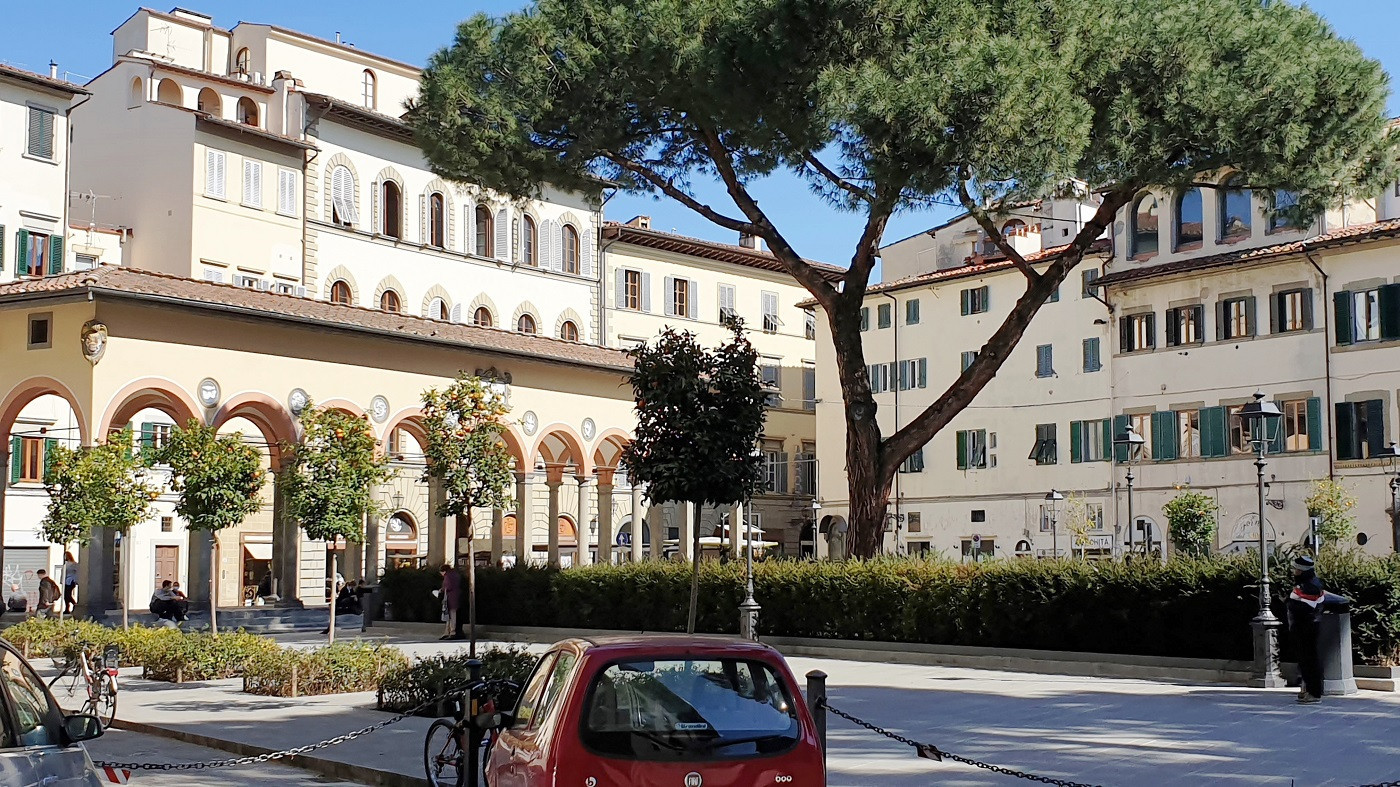
The Gardens of Florence - Piazza dei Ciompi and its stories
A small square in the heart of the Santa
Croce district. It may appear ancient, but it was actually created in the
1930s, when it was decided to demolish the area, crammed with old buildings considered
unhealthy and degraded, in order to build a modern neighborhood. For these
urban interventions, Fascism used the expression "the healing
pickaxe". The Florentines instead called it "gutting", an
eloquent term coming from butchery, already been used for the demolition of the
Old Market and the Ghetto in 1885, where Piazza della Repubblica was built.
Many buildings in the Santa Croce area dated back to 1500 and housed
workshops of artisans and artists, including the alleged Cimabue workshop,
where Giotto had worked.
The works in the area of Piazza dei
Ciompi, interrupted by the war, ended in 1948 with the construction of mediocre
buildings and the much discussed Palazzo della Sede Provinciale della Direzione
delle Poste nearby, designed by the great architect Giovanni Michelucci. We do
not want to get into the endless controversy concerning the architectural value
of this building, but one thing hits the eye: the poor integration with the
surrounding environment and the questionable attractiveness of the exposed raw
concrete masses.
On the north side, in 1955, the Loggia del
Pesce was rebuilt, a victim of the "gutting" of 1885. The Loggia
was created in 1568 for the fishmongers, who were originally settled on Ponte
Vecchio. They were later evicted in order to build the Vasari Corridor that
connected Palazzo Pitti (home of the Grand Duke) with Palazzo Vecchio (seat of
the city government). With this elevated passage the grand dukes
could move from one place to another without risking attacks, or worse, contagions
during frequent epidemics. Dismantled in 19885, the pieces of the Loggia were
stored in the deposits of the San Marco Museum and. In 1955 the Municipality,
sponsored by the Cassa di Risparmio di Firenze, decided to reassemble it in Piazza dei Ciompi.
After being the home to the Marcato delle
Pulci for years, today this square has become a public park, with at its center
a beautiful 80 years old pine tree measuring more than 20 meter in height and
just as many in canopy diameter, and with all around orange trees.
Among the buildings on the south side of
the square we find the house of Lorenzo Ghiberti (1378 - 1455), sculptor,
goldsmith, architect and writer, famous for the Golden Gate of Paradise in the
Florence Baptistery and the statues of the Church of Orsanmichele.
The building has housed for decades the
Casa del Popolo Buonarroti, named in honor of Michelangelo Buonarroti, who
owned houses nearby. The Case del Popolo, linked to the left-wing political
parties, were cultural associations and centers of welfare, mutual aid and
recreational services, but also of work and consumer cooperatives.
The Buonarroti’s was, from the 1950s until
the 1980s, one of the cultural center of the Florentine left parties. It is now
home to the Study Center of ARCI Florence. The ARCI (Italian Recreational and
Cultural Association), was founded in 1957 by the left-wing parties and played
a fundamental role in the Italian cultural history of the second post-war
period and in particular in Florence. It contains the very rich archive of all
the Case del Popolo in the province, with documents, books, photos, items,
posters, flags, flyers, mimeographs and all the works produced by the
Florentine mutual associations. An entire documentation, a precious mine for
those who will write the history of those decades.
But who were the Ciompi to whom the square
is dedicated? They were the wage workers who worked the wool. The production
and trade of luxury fabrics was the basis of the economic development of
Florence, which together with the banks, enriched the main families, the
so-called "fat people". The Ciompi worked in unthinkable conditions
for us today, exploited, without any political representation and always
precarious, so they revolted in 1378. Theirs, will be the first popular
uprisings of economic and social nature in Europe. A class of wage workers
against their masters to obtain economic and regulatory improvements and
political representation in the city government. Despite a first successes
gained thanks to their numbers, the revolt inevitably ended badly and the
"fat people" regained power. To obtain the rights the Ciompi were
asking for, we would have to wait centuries.



